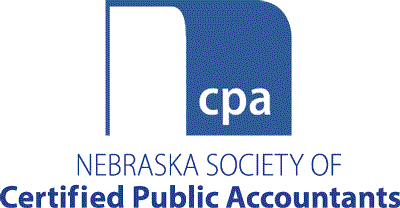The purpose of an audit is to provide financial statement users with an opinion by the auditor on whether the financial statements are presented fairly, in all material respects, in accordance with an applicable financial reporting framework, which enhances the degree of confidence that intended users can place in the financial statements (AU-C 200.03). An audit conducted in accordance with Generally Accepted Auditing Standards (GAAS) and relevant ethical requirements enables the auditor to form that opinion.
Auditors are to obtain sufficient appropriate audit evidence to reduce audit risk (that is the risk that the auditor expresses an inappropriate opinion when the financial statements are materially misstated) to an acceptably low level (AU-C 200.05). According to newly effective AICPA SAS No. 138, misstatements, including omissions, are considered material if there is a substantial likelihood that, individually or in the aggregate, they would influence the judgement made by a reasonable user based on the financial statements. And it only takes one material misstatement to render a set of financial statements to be materially misstated.
High quality audit reports are critical to serving the public interest, as discussed in SAS No. 146, paragraph 6. SAS No. 134, as amended by SAS No. 41, addresses audit reporting and was effective for periods ended on or after Dec. 15, 2021. Paragraph 20 of AU-C 200 states that “the auditor not represent compliance with GAAS unless the auditor has complied with all of the AU-C sections relevant to the audit.” (NOTE: This concept never involves the notion of materiality—just relevance or “applicability.”) In other words, auditing standards, including those dealing with reporting, are either relevant or not.
SAS No. 134, paragraph .09, indicates the objectives of the auditor are to:
- Form an opinion on the financial statements; and
- Express clearly the opinion through a written report.
For purposes of this report, an audit report will be considered “substandard” if it does not meet the above objectives or departs from a relevant audit standard including:
- Making false statements regarding audit scope, Generally Accepted Accounting Principles (GAAP), audit finding, or any other statement of substance;
- Failing to include required content specified by SAS No. 134 or other relevant standard, including content sequencing (for example, paragraph .24 of SAS No. 134 says the first section of the auditor’s report should include the auditor’s opinion and should have the heading “Opinion”; paragraph .28 requires the Basis for Opinion section, appropriately headed, to directly follow the “Opinion” section);
- Failing to express an appropriate opinion (the auditor incurs the “audit risk”). Per SAS No. 134, opinions are either unmodified, or modified (qualified, adverse, or disclaimer).
- Of course, an auditor’s opinion is based on their professional judgement, which can vary among different professionals. AU-C 200 .A27 contains a very important observation in this regard:
- The distinguishing feature of professional judgement expected of an auditor is that such judgement is exercised based on competencies necessary to achieve reasonable (emphasis added) judgements, developed by the auditor through relevant training, knowledge, and experience.
- Furthermore, SAS No. 134, paragraph .A45, acknowledges that “there is an unavoidable risk that some material misstatements of the financial statements may not be detected even though the audit is properly planned and performed in accordance with GAAS. Accordingly, the subsequent discovery of a material misstatement of the financial statements resulting from fraud or error does not by itself indicate a failure to conduct an audit in accordance with GAAS.”
- It follows, then, that auditors would be well-served to document all misstatements (as defined by AU-C 450, along with examples thereof) noted during a GAAS audit and their evaluation regarding materiality. (An unnoted misstatement would never be a material misstatement that could affect the auditor’s opinion.)
- Finally, a material misstatement that goes undiscovered, even in a properly conducted GAAS audit, results in an inappropriate opinion that fails to serve the public interest.
- Of course, an auditor’s opinion is based on their professional judgement, which can vary among different professionals. AU-C 200 .A27 contains a very important observation in this regard:
The SAS No. 134 objective regarding clearly expressing the auditor’s opinion is challenging to evaluate achievement thereof due to an apparent absence of a definition or practical criteria. (What is “clear”?)
- For example, some opinions include an update to a prior year opinion along with the current year opinion, and properly refer to “audits” plural, when other paragraphs of the same auditor’s report inappropriately refer to the “audit” singular. While awkward and potentially unclear, this report does not consider a substandard auditor’s report to have been issued, just because of this plural/singular issue. Reasonable readers may not be impacted.
- On the other hand, in an auditor’s report on a state or local government set of financial statements where auditors are to opine on multiple opinion units separately (versus having only one opinion unit, or one overall opinion in certain special circumstances), an auditor’s failure to consistently refer to plural opinions versus a singular opinion may lack sufficient clarity so as to qualify as a substandard audit report.

For purposes of this report, any auditor’s report that is not “substandard” is considered “standard.” Standard audit reports can potentially depart from specific language available to auditors in illustrations or examples, or include unfortunate typographical, spelling, or grammatical errors. Audit report content, including the appropriateness of the auditor’s opinion(s) is what is critical to serving the public interest.
Below are examples of actual auditor’s reports read by the author in recent years, issued by firms of all sizes, all of which were signed and dated, representing to have conducted their audit(s) in accordance with GAAS. Many of these reports contained multiple substandard characteristics, and all opinions were unmodified, unless otherwise noted.
Making false statements
- An auditor who prepared and presented (an independence issue) comparative (two-year) cash basis financial statements on part of a nonprofit organization (NPO), but had only audited the current year, stated in the auditor’s report that the auditor had audited both years. (The auditor also failed to mention that the NPO was a component unit of a government and that the basis of accounting used was inappropriate for the government’s GAAP basis financial statements.)
- An auditor reporting on a city’s financial statements under SAS No. 134 in the “going concern” paragraph referred to both Financial Accounting Standards Board (FASB) alternatives for defining the “reasonable period of time” management is to use for their evaluation of “substantial doubt” rather than the appropriate Governmental Accounting Standards Board (GASB) definition (see SAS No. 132).
- An auditor’s Yellow Book report in a Single Audit indicated there were reportable findings, but neither that report nor the accompanying Schedule of Findings and Questioned Costs reported any. That same auditor’s Single Audit compliance report indicated that the auditee’s major federal programs were identified in the Schedule of Findings and Questioned Costs. They were not. Neither of these auditor’s reports were subsequently recalled and corrected.
Failing to include required content
- An auditor reporting on a Dec. 31, 2021, set of GAAP financial statements failed to follow SAS No. 134 with all its new required content and sequencing.
- An auditor reporting on a June 30, 2021, set of GAAP financial statements under SAS No. 134 (early application is permitted by SAS No. 141’s amendment) failed to:
- opine on the entity’s change in financial position;
- include a Basis for Opinion section; and,
- report on Other Information presented with the financial statements.
- An auditor reporting on a city’s Dec. 31, 2020, financial statements under SAS No. 134 failed to use the heading “Opinions” as required by paragraph .24 thereof. (The plural form of that word would have been appropriate since there were multiple opinion units, but no heading at all was used.)
- Despite basing their opinions on “our audit and the report of other auditors,” the auditor failed to indicate anywhere in the audit report what was audited by the other auditors, whose report did not accompany theirs.
- An auditor’s adverse opinion on a local government’s financial statements prepared by the auditor failed to include all the material misstatements that would have resulted in the adverse opinion (see AU-C 705, paragraph .28). There were numerous additional GASB 34 material misstatements besides the one that was cited (lack of government-wide financial statements), including overstatement of assets on one line item of $1.2MM, inclusion of account groups (superseded by GASB 34) in the basic financial statements, failure to report by major fund (not by fund type), and numerous footnote omissions.
- Auditors of numerous local government financial statements over multiple years failed to properly identify the individual opinion units in the financial statements subject to the respective audits.
- In general, auditors are to opine on a reporting entity’s financial position and changes therein and cash flows, not individual financial statements. One auditor recently opined on an entity’s “statements of functional expenses“ inappropriately, as well as causing additional confusion by then not listing the other individual statements presented therewith.
Failing to express an appropriate opinion
- An auditor failed to modify their opinion on a set of financial statements they prepared for a special-purpose government engaged only in business-type activities for numerous material GAAP departures (see GASB 34), including:
- balance sheet not in “classified” format;
- statement of revenues and expenses did not distinguish between operating and nonoperating items;
- reporting capital assets previously disposed;
- failure to report a very significant capital asset received previously from another government; and
- several footnote disclosures needed for fair presentation.
- An auditor failed to modify their opinion for material misstatements in the comparative Statements of Activities of a not-for-profit (NFP) foundation that underreported fundraising and general and administrative costs resulting in part from intermixing natural and functional expenses in the total operating expense amount. Program expenses were presented outside of operating expenses. Most of these errors were corrected in the comparative presentation in the following year’s comparative financial statements, but with no acknowledgment of the correction of these errors. The same auditor failed to modify their opinion in that following year’s audit.
- An auditor’s report was not modified on a set of NFP comparative financial statements where two-thirds of its net assets were improperly identified as donor restricted in perpetuity versus not in perpetuity. Detail footnote totals did not articulate with the amounts on the Statement of Financial Position. Neither the financial statements nor the auditor’s report were recalled and reissued. The subsequent year’s auditor’s report was not modified for the correction of this error.
Recently issued SAS No. 146, Quality Management for an Engagement Conducted in accordance with GAAS, paragraph 6, states, “The public interest is served by the consistent performance of quality audit engagements that achieve the objective(s) of this SAS and other AU-C sections.” Appropriate audit opinions matter, especially in this time in our country’s history when it is often challenging to know what to believe and trust in. Users of auditor’s reports should never have reason to question their veracity.
Paul H. Koehler, CPA, is a sole practitioner in Lincoln, Neb. He has more than 45 years’ experience in auditing, training, and consulting, specializing in nonprofit organization and state and local governments. You may contact him at (402) 488-1578.









